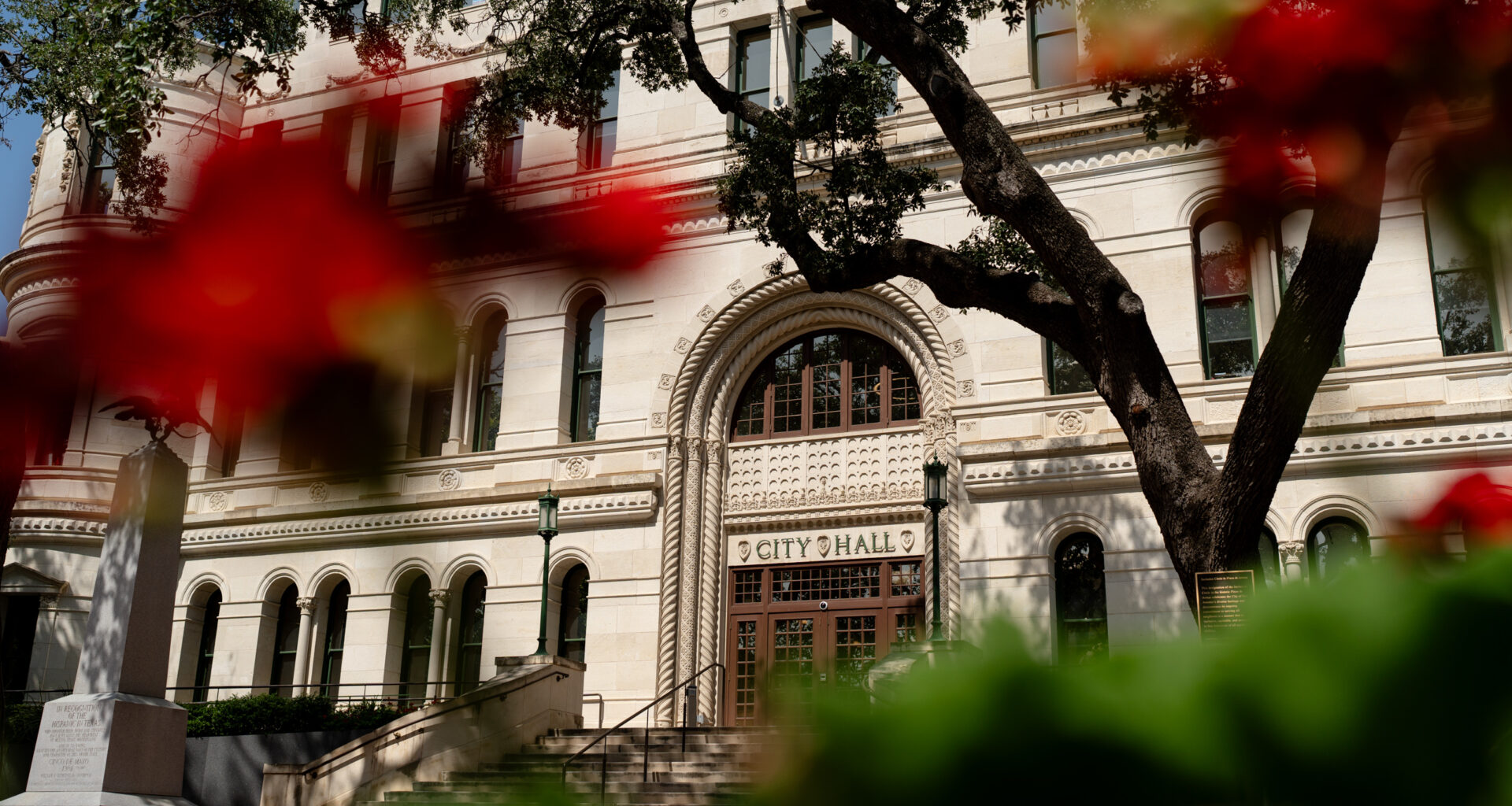San Antonio’s budget writers are proposing cutting city staff positions, scaling back a proposed raise for city employees and cutting some parks programs in the city’s 2025-2026 budget.
They also plan to raise a number of fees, such as parking tickets and traffic violations, to generate additional city revenue.
The City Council will meet over the coming weeks to discuss individual department budgets and propose changes before approving a final budget on Sept. 19.
Like Texas’ other major cities, San Antonio faces waning property tax and sales tax revenue and uncertainty surrounding federally funded programs headed into this budget season.
The proposed $4.04 billion budget is still a 2.2% increase over the previous year, but the spending cuts help avoid a property tax increase that city staff floated in July.
In recent years, property values were growing and San Antonio had been cutting its tax rate and instituting new tax exemptions so that it wouldn’t collect more than the state’s limit of 3.5% growth in property tax revenue over the previous year.
This year overall property tax revenue came in just .4% higher than the previous year — meaning San Antonio would need to raise its rate back up if it wanted to collect as much property tax revenue as it is legally allowed.
But Budget Director Justina Tate said Thursday that council members made clear they didn’t want to put that burden on homeowners, and budget staff instead found places to cut spending.
San Antonio’s tight budget times represent a major change from the environment most council members have experienced in recent years — when rapidly rising property values and federal pandemic relief funding buoyed city coffers.
“The biggest change that we have that will lay out to the council … is the reduced spending we are looking at,” said City Manager Erik Walsh, who earlier this year projected a roughly $150 million budget deficit by 2027 if cuts weren’t made.
Public input
You can weigh in on the city’s proposed budget at public meetings, happening across San Antonio between Aug. 19-29. Find a meeting near you.
“…We have spent a fair amount of time this summer coming up with a plan to reduce our expenses.”
As part of that process, leaders of some city departments were asked to prepare 10% budget reductions this year.
Essential services, such as San Antonio Police Department, San Antonio Fire Department and Animal Care Services, were asked to prepare a 1% decrease in their budgets, while Parks, Public Works, Public Health and Human Services were already in the process of comprehensive budget reviews that produced savings plans for their leaders.
Not all of those suggested cuts are needed immediately to balance this year’s budget.
In fact, SAPD is poised to add 25 new patrol officers and Animal Care Services would receive a 4% budget increase in 2026 under Thursday’s proposed budget.
But Walsh said the spending reviews will give the newly elected council an idea of where to start cutting if revenue continues to come in under projections, or if federal grants that the city depends on aren’t funded under the Trump administration.
“Those things become kind of a guardrail as we manage our expenses throughout the year,” Walsh said.
Mayor Gina Ortiz Jones said the proposed federal cuts pose a looming threat on par with the COVID-19 pandemic — potentially jeopardizing the city’s ability to feed, shelter and provide health care for its most vulnerable residents.
“It’s almost like you know COVID is coming,” Jones said. “So how do we essentially ensure we’re best prepared and postured to respond.”
Federal grants currently account for about $160 million of the city’s 2025-2026 budget, helping pay for Metro Health services, housing initiatives, airport projects and some police officer salaries.
Here’s an overview of proposed changes:
Cuts fall on city staff
The city of San Antonio has roughly 13,000 employees.
Civilian city staffers are expected to get a 2% cost of living increase in this year’s budget — down from the 3% increase projected earlier this year. No cost of living increase is being projected for 2027.
To save money, employees will also be expected to pay more for health care premiums.
The changes come as Texas’ rapidly rising cost of living is being blamed for cutting into state and local sales tax revenue, because residents have less to spend on goods and services.
Several council members said Thursday that they hoped staff raises would be adjusted back up during the budget negotiation process.
In response to a reporters’ question Wednesday, Walsh, who received a 23% raise in December said the 2% cost of living increase does not apply to his position.
The city also plans to cut 68 staff positions across various departments, of which only 35 are currently filled. All affected employees are being offered other positions at the city, Walsh said.
Police and fire salaries are set by collective bargaining agreement with those agencies’ unions. The police officers are scheduled to receive a 4% pay adjustment next April, and the firefighters are scheduled for an 8% increase on October 4.
Fees and tickets
The city plans to make up some additional revenue by increasing the cost of parking tickets, traffic violations, code violations, alarm permits, food establishment permits and other fees.
The proposed budget says the fee for parking tickets is currently a minimum of $27, set in 2009. It would rise to a minimum of $47 per violation starting Oct. 1.
Parks
Other cuts are being proposed for park programs.
The Parks and Recreation Department has 24 programs at community centers, and Walsh said they would be scaled back based on attendance numbers.
